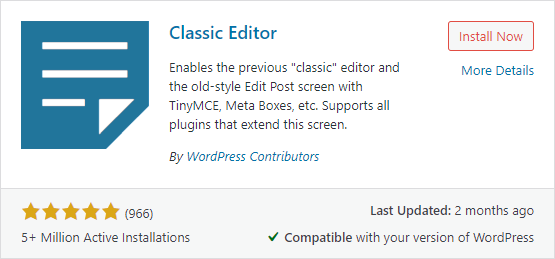 Since WordPress 5.0 rolled out, millions of users have turned to “Classic” plugins in an effort to undo what the company heralded as its next big leap forward: the Gutenberg block editor. The numbers tell the story, dozens of “Classic”-style plugins now exist, many with massive adoption. It’s hard to call that anything but a failure.
Since WordPress 5.0 rolled out, millions of users have turned to “Classic” plugins in an effort to undo what the company heralded as its next big leap forward: the Gutenberg block editor. The numbers tell the story, dozens of “Classic”-style plugins now exist, many with massive adoption. It’s hard to call that anything but a failure.
The reasons aren’t hard to find. Spend five minutes browsing forums, blogs, and user reviews, and the criticisms repeat themselves like clockwork: a confusing interface, a loss of the old intuitive flow, the need to double- or triple-check work before publishing, and wasted time at every turn. WordPress, once the champion of simplicity, now feels like one of those over-engineered commercial apps, designed by developers who’ve forgotten what it’s like to be the end user.
It gets worse. Some plugins don’t play well with Gutenberg’s block system, and the concept of “blocks” itself remains baffling for many casual users. Menus seem to explode in every direction, with separate controls for almost every action, adding layers of complexity and an ongoing burden of maintenance.
If there were an easy, seamless way to migrate from WordPress to another CMS, many would have jumped ship already. But most site owners stay, hoping against hope that the WordPress team will course-correct and deliver what it once did so well: an editor that’s simple, modern, and intuitive. It’s worth remembering that most writers are not programmers’ and they don’t want to spend their workday wrestling with technical quirks.
Until that day comes, frustrated users who have upgraded to Gutenberg and regret it can at least reclaim some sanity: search the plugin directory for “Classic” and restore the familiar, streamlined interface that made WordPress great in the first place. It’s a stopgap, but for now, it’s the best way to bring back the joy of publishing.
By the editorial staff of Bayou Blue Radio

